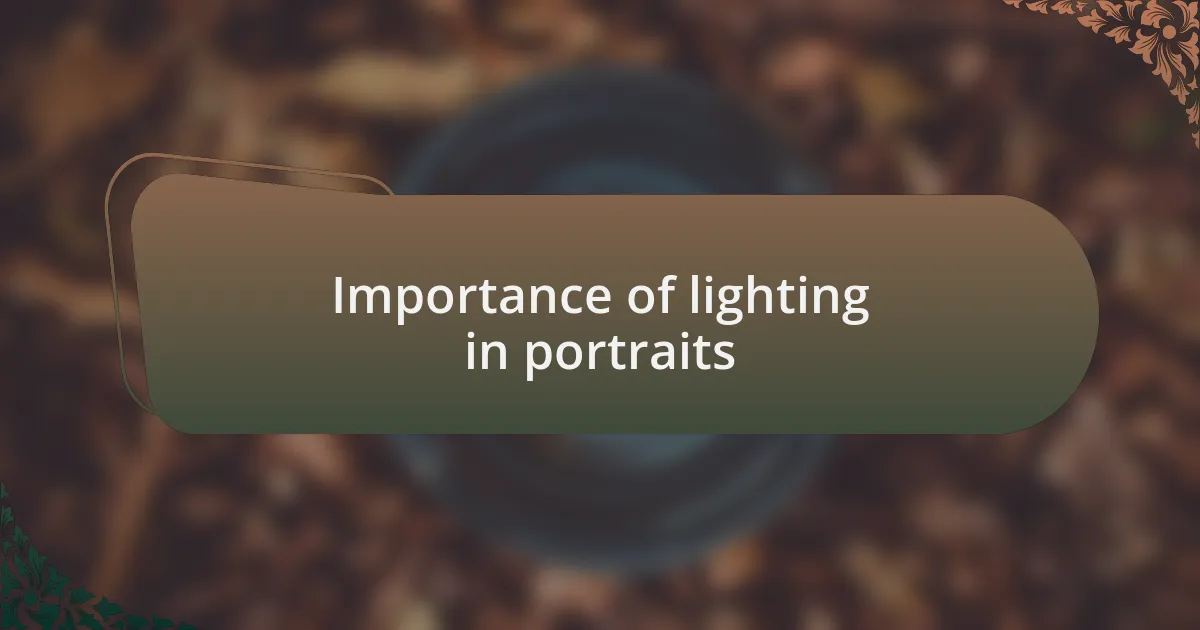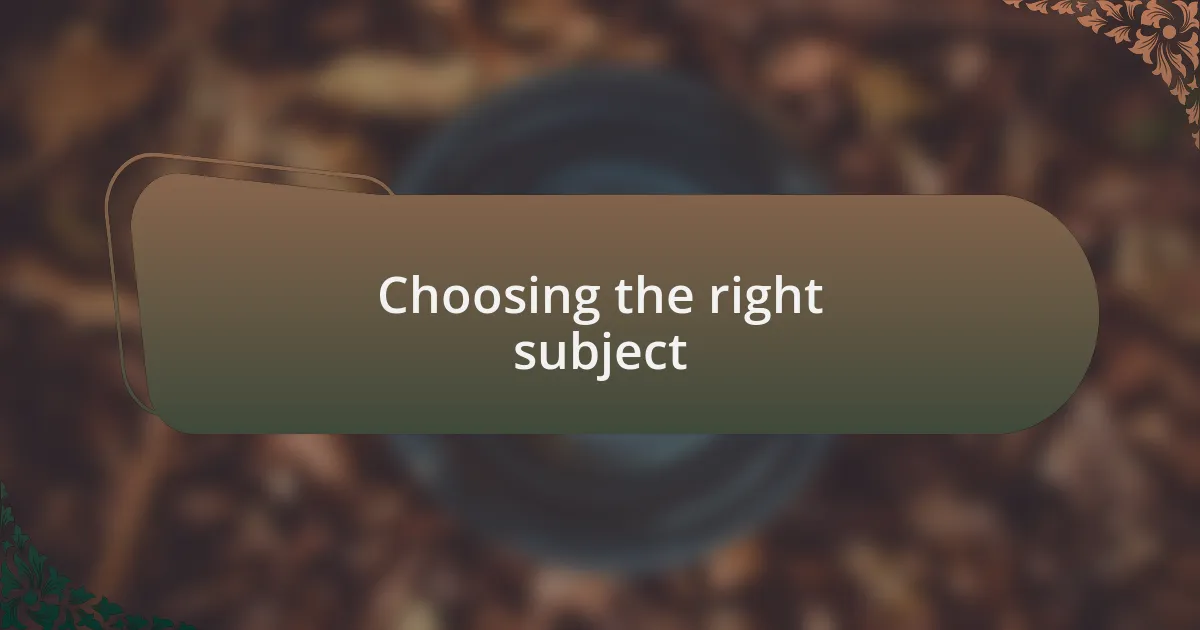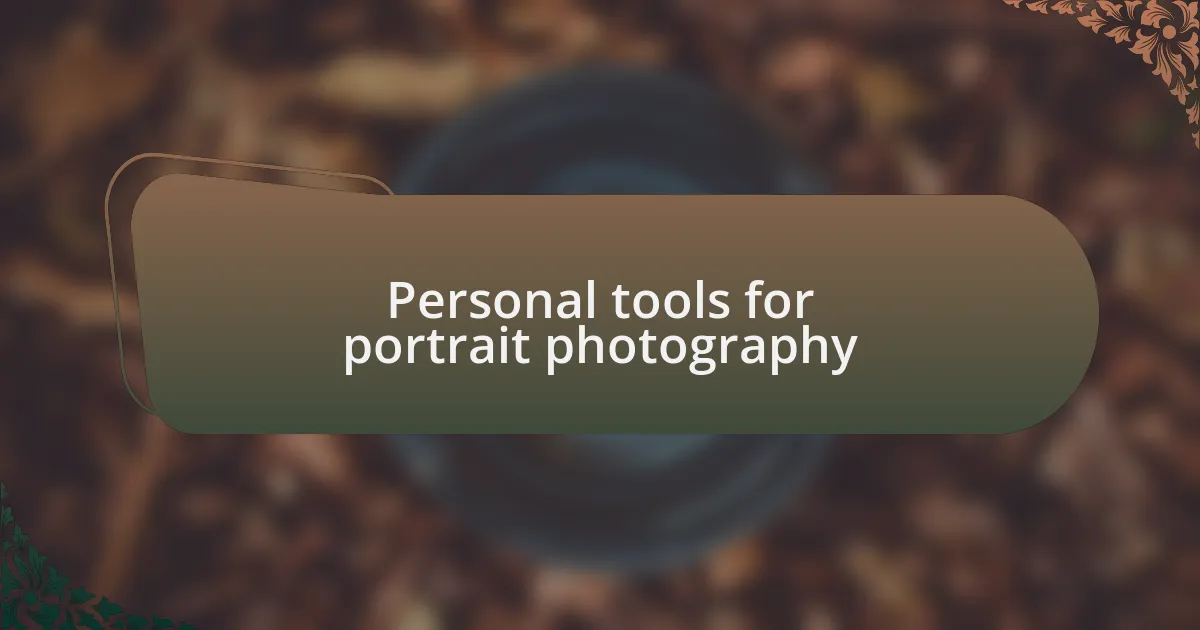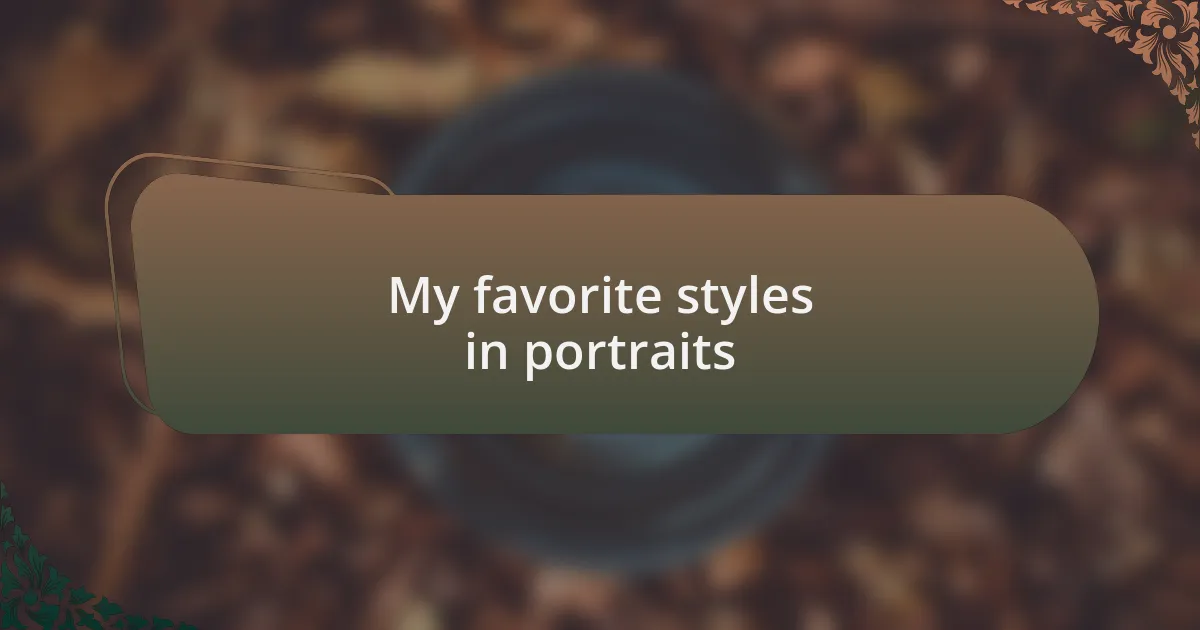Key takeaways:
- Black and white portraits emphasize emotions and expressions, allowing viewers to engage with the subject’s deeper story through contrasts of light and shadow.
- Lighting is crucial in portrait photography; it shapes mood and highlights features, transforming simple images into compelling narratives.
- Choosing subjects with unique features and developing an emotional connection enhances the storytelling aspect of a portrait, making it resonate with viewers.
- Effective composition techniques, such as the rule of thirds and negative space, can elevate a portrait’s engagement and focus on the subject’s emotional narrative.

Understanding black and white portraits
Black and white portraits strip away the distractions of color, allowing the viewer to focus on the subject’s emotions and expressions. I remember taking a portrait of my friend, and without the hues of his clothing, I was surprised at how powerful his gaze became. It was almost as if the absence of color revealed a deeper story, pulling me into his world.
When I look at a striking black and white image, I’m often struck by how the contrast shapes the overall mood. The interplay of light and shadow can evoke feelings ranging from serenity to turmoil, making each portrait uniquely compelling. Have you ever noticed how certain tones can dance across a face, telling their own story? For me, it’s these subtleties that breathe life into black and white photography.
Depth is not just about the graphical elements; it’s also about context. I recall an instance when I captured a candid moment of my grandfather sitting on his porch, his face lined with stories of the past. That image, devoid of color, felt timeless and nostalgic. It made me wonder how many stories we miss when we focus solely on what’s vibrant and colorful.

Importance of lighting in portraits
Lighting is the lifeblood of any portrait, especially in black and white photography. I vividly recall a session on a cloudy day; the diffused light from the overcast sky softened the harsh features of my subject, creating a serene atmosphere that drew attention to their expressive eyes. Have you noticed how the right lighting can turn a simple shot into something breathtaking?
The direction of light can dramatically alter the mood. Once, while experimenting with backlighting, I captured a silhouette of a dancer moving with grace. The shadows shaped by the light added an ethereal quality to the image, transforming a basic pose into a dramatic story. This experience made me realize just how crucial the interplay of light and shadow is in portraying emotion and depth.
Controlling contrast is key in black and white portraits. I remember attempting a high-contrast shot with strong side lighting, which highlighted my subject’s cheekbones and created a striking profile. It was like uncovering a hidden gem—it revealed the character and strength in their expression. Isn’t it fascinating how light can literally shape how we perceive a person’s inner narrative?

Choosing the right subject
Choosing the right subject for a black and white portrait is crucial, as it sets the tone for the entire photograph. I often find myself drawn to subjects with unique features or compelling expressions. For instance, I once photographed an elderly man whose weathered skin told stories of his life experiences—each wrinkle a testament to time. Can you see how a subject like that naturally becomes a canvas for storytelling?
I believe that the subject’s personality plays a significant role as well. During one of my favorite sessions, I captured a young artist in her creative space, surrounded by her tools and unfinished work. The way she interacted with her environment infused energy into the portrait, making it feel alive. Isn’t it remarkable how a subject can bring so much life to a black and white image, simply by being authentic?
Additionally, the emotional connection between the photographer and the subject cannot be overlooked. I recall a time I shot a close friend, and as we talked and laughed, it was as if the camera could capture our camaraderie. The resulting image wasn’t just a portrait; it reflected our bond in the subtleties of her expression. What if we treated every portrait session as a moment to connect on a deeper level? This emotional intimacy can truly elevate the impact of the portrait.

Composition techniques for portraits
When it comes to composing a portrait, framing is key. I often use the rule of thirds to place my subject off-center, creating a more dynamic image that draws the viewer’s eye. I remember one shoot where I positioned a dancer slightly to the side, allowing the empty space on the opposite side to emphasize her movement. What if you tried this technique in your own work? You might discover that slight adjustments can lead to much more engaging results.
Another technique that serves me well is the careful use of negative space. I once captured a portrait of a writer surrounded by stacks of her unpublished manuscripts. By allowing the empty space around her to breathe, I found that it highlighted her isolation in the creative process, telling a deeper story without uttering a single word. Have you considered how negative space can add layers to your photography?
Finally, don’t underestimate the impact of depth in your portraits. Using a wide aperture can create a beautiful bokeh effect that isolates the subject from the background, enhancing focus on their expressions. I recall photographing a musician in a bustling café; by blurring the background, I emphasized his soulful demeanor while still hinting at the vibrancy of his environment. Isn’t it fascinating how a simple adjustment in depth of field can profoundly change a viewer’s perception?

Personal tools for portrait photography
When it comes to tools for portrait photography, my go-to lens is often a prime lens with a focal length of 85mm. It gives me that stunning compression and flattering perspective that enhances facial features beautifully. I remember shooting a close-up of a friend’s expressive face during golden hour; the results were breathtaking, capturing the gentle light and softening shadows in a way that made her eyes truly pop. Have you ever noticed how the right lens can transform not just an image, but the entire feel of a portrait?
Lighting stands out as another essential tool in my arsenal. A simple reflector can work wonders to bounce natural light back onto my subject’s face, creating that coveted glow. I vividly recall a session in a park where I used a silver reflector for a model, which brightened her features against the soft greenery. That little touch added a warmth that made the whole scene come alive. Have you experimented with reflectors yet? They can add an extra layer of magic to your portraits.
Lastly, I find that personal connection tools – like a lightweight, portable tripod – can make a significant difference. It frees me to engage with my subject rather than fussing over camera stability. I once captured a spontaneous laugh from a friend while we were still setting up; the tripod allowed for that candid moment to be beautifully framed. How do you connect with your subjects to capture authentic moments? I believe that finding that balance between equipment and the human element is key to creating portraits that resonate.

My favorite styles in portraits
When it comes to my favorite styles in portraits, I absolutely love candid photography. Capturing a genuine emotion or reaction brings an energy to the image that posed shots can sometimes lack. I once attended a family gathering where I snuck snapshots of my cousin’s son playing with his dog. The joy and excitement etched on his face as he laughed made for a timeless portrait that vibrantly captured the spirit of the moment, don’t you think those spontaneous interactions add a special layer to photography?
Another style that resonates with me is high contrast portraits. The drama created by deep shadows and striking highlights can elevate a simple image into something truly artful. I remember photographing a musician under harsh stage lights; the stark contrast brought out the intensity of his performance. Seeing the emotive power in those shadows—it’s like the portrait becomes a story bursting with life and character. Have you ever tried experimenting with light and shadows in your portraits?
Lastly, I have a soft spot for black and white imagery. Stripping away color allows the viewer to focus on textures and expressions, creating a timeless quality that feels deeply impactful. During a recent shoot in an old café, I aimed for a classic black and white style. The weathered walls and soft, diffused light created a beautiful framework for capturing raw emotions. I often find myself asking, what does a subject reveal when color is removed? It’s exciting to explore how monochrome can tell stories that might be overlooked in vibrant color photography.